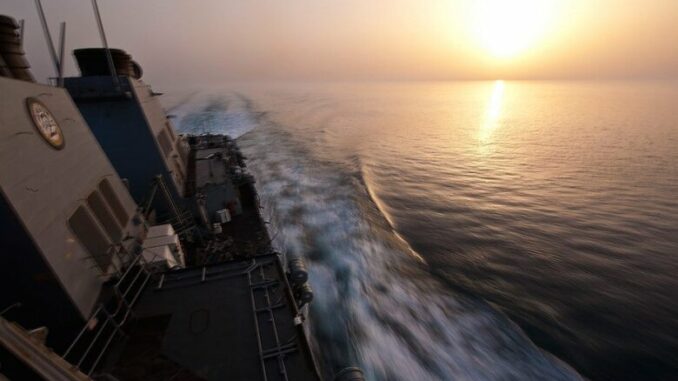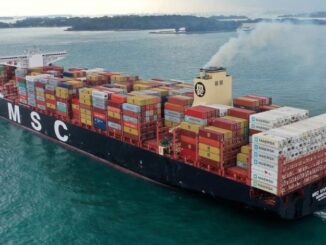
The futility of 22 naval ships trying to patrol 2,200 km of Yemeni coastline were once again exposed yesterday with two US-flagged Maersk boxships fired upon by the Houthis as shipping comes to terms with the fact that the Red Sea exodus is here to stay for a considerable time.
Reacting to Israel’s war in Gaza, the Houthis of Yemen – backed by Iranian intelligence and hardware – have targeted around 40 merchant ships in the last three months with drone and missiles, as well as taking one carrier and its crew, the Galaxy Leader, hostage.
The Maersk Detroit and the Maersk Chesapeake became the latest vessels to be targeted yesterday, with both ships forced to turn around.
According to the US military three anti-ship ballistic missiles were fired at Maersk Detroit. Two were shot down and one exploded just 100 m from the vessel’s starboard.
Container shipping was the quickest sector to reroute away from the Red Sea and the Suez, with some 90% of all boxships heading via southern Africa on voyages between Asia and Europe. According to liner analyst John McCown, who runs US firm Blue Alpha Capital, the Asia-Europe tradelane accounts for 25% of worldwide container miles and with typically one-third longer voyages the change has the effect of drawing in the equivalent of 8% worldwide capacity of boxships and equipment to maintain the same service.
For the tanker trades, Middle East-origin crude flows to Europe have all now started rerouting to Europe via the Cape of Good Hope, though loadings do appear to be continuing normally. Only two transits have been observed via the Bab el-Mandeb since US-led strikes began on January 12, the last of which occurred a week ago, according to new analysis from Vortexa.
The vessel class most impacted by these diversions is suezmax, as this is the class that carries most of these cargoes through the Red Sea on this route. Diverting via the cape adds about 4,900 nautical miles to the voyage and over two weeks in voyage length. This increases tonne-miles for a single voyage by around 70%, according to Vortexa.
Using 2023 data, Vortexa has projected the impact to this vessel class if this rerouting continues. On a monthly basis, tonne-miles for suezmaxes carrying crude from the Middle East to Europe would increase about 130% if transits occur via the cape instead of the Bab el-Mandeb. With the incremental increase from the extra tonne-miles for these specific cargoes, monthly global suezmax tonne-miles would increase by around 10%.
Turning to product tankers, a very hot sector rates-wise at present, Pareto Securities suggests no product tankers look set to use the Suez Canal during the first half of February — and this will imply near-zero middle-distillate arrivals from the Middle East Gulf and India to Europe during that time, something that will require significant stock draws or the need for replacement cargoes.
New analysis has just been published on how the shut-in of the Red Sea is affecting the LNG trades too. Qatar is now shipping all its gas cargoes to Europe via the cape and last week Splash reported on how the Red Sea had no gas carriers in it at all for the first time this century.
For the LNG market, an extended shut-in of the Red Sea route from the Middle East poses a supply risk to Europe, although the price impact will be delayed until Europe’s gas storage has been drawn down sufficiently.
In 2023, around 15.5m tonnes of LNG was sent through the Red Sea from the Middle East to Europe accounting for 12.9% of the continent’s LNG supply last year.
Re-routing vessels through the Cape of Good Hope adds around 12.5 days to the voyage each way at 16 knots – which could require an additional 15-20 vessels to deliver the same volume over the year, Rystad analysis shows.



